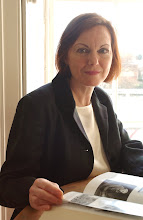 Museum ownership and the Burnet plan meant many changes for 42-43 Russell Square. The great and the good no longer wanted to live in the square, and the process began of converting the buildings into offices and small flats. The 1901 census shows Robert Humphrey, a general labourer, occupying No. 42 and police sergeant Nelson Neame next door at No. 43. The houses also acquired new names during the 20th century; No. 42 became Marylebone House, and No. 43 Chalmers House. For much of the 20th century, the houses were divided between offices on the main levels and small apartments on the top floor.
Museum ownership and the Burnet plan meant many changes for 42-43 Russell Square. The great and the good no longer wanted to live in the square, and the process began of converting the buildings into offices and small flats. The 1901 census shows Robert Humphrey, a general labourer, occupying No. 42 and police sergeant Nelson Neame next door at No. 43. The houses also acquired new names during the 20th century; No. 42 became Marylebone House, and No. 43 Chalmers House. For much of the 20th century, the houses were divided between offices on the main levels and small apartments on the top floor.Around 1910, the eminent archaeologist Herbert Sefton-Jones lived in the flat at the top of No. 42. A leading Quaker, patent attorney and world traveller, he was an active promoter of the League of Nations.
More significantly, the Football Association moved into No. 42 in 1910, and made it their headquarters for nearly 20 years. These were years of expansion for the FA, led by its formidable Secretary Sir Frederick Wall, as it organised links with foreign national football associations and oversaw changes in English football which led to the end of the dominance of northern teams in the Football League. Sir Frederick Wall may have been the globetrotting Secretary, but the real power at No. 42 was undoubtedly Mrs Alice Rule, the resident Housekeeper. Born in Babbacombe, Torquay in 1866, she occupied the top flat with her husband John, described as a “hot water fitter”. There was of course no professional football played during the First World War, and in 1915, the War Office commandeered 42 Russell Square.
Next door, No. 43 was already playing its part in the war effort. It had been turned into a homeopathic hospital in 1910, but when war broke out the building became the headquarters of the South East Mounted Brigade. This territorial unit was sent off to the killing fields of Gallipoli in 1915. The London Homeopathic Hospital had been based in Great Ormond Street since 1859, and in 1911 acquired grand new premises next door to its earlier hospital (picture above shows its new nurses home, 1911). No. 43 Russell Square had also been bought up, to act as a headquarters and medical school for the British Homeopathic Association.
No. 43 had been described in 1909 as comprising “two fine reception rooms occupying the whole of the first floor… one for a lecture-room, the other for a library, while on the top floor is a spacious, well-lighted and suitably fitted research laboratory”. Also living somewhere on the premises (a basement flat perhaps?) was Myron Phelps, a prominent American lawyer and campaigner for Indian independence. However, he was best known as a promoter of the Bah’ai faith; he translated the works of Abdu’l-Bahá, the second leader of Baha’i, into English, which popularised Bahaism in the West.
